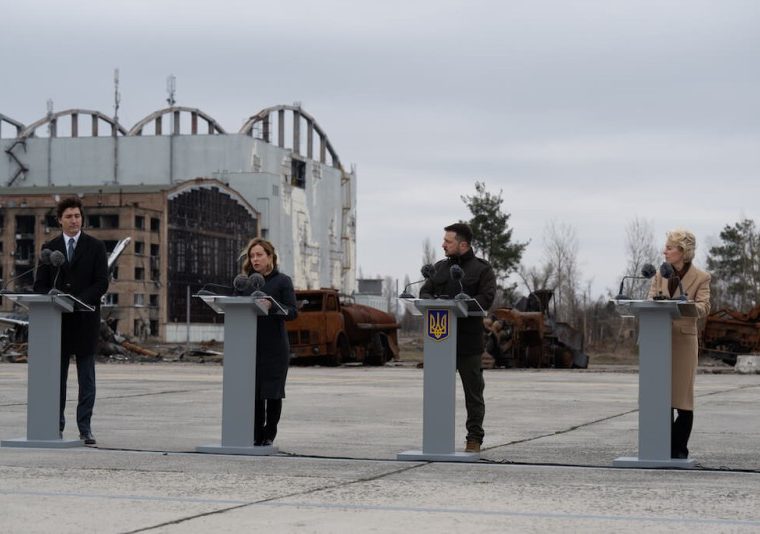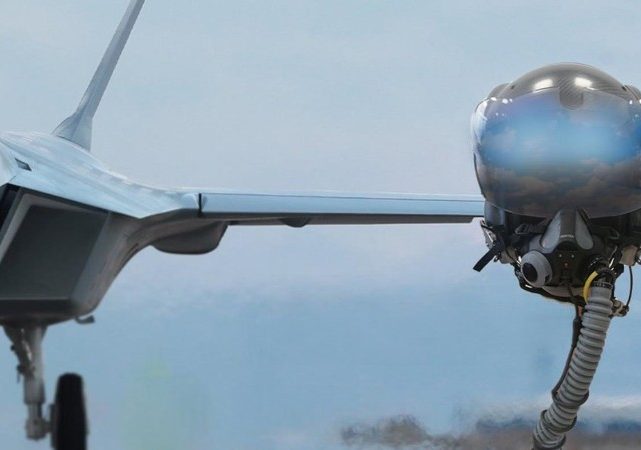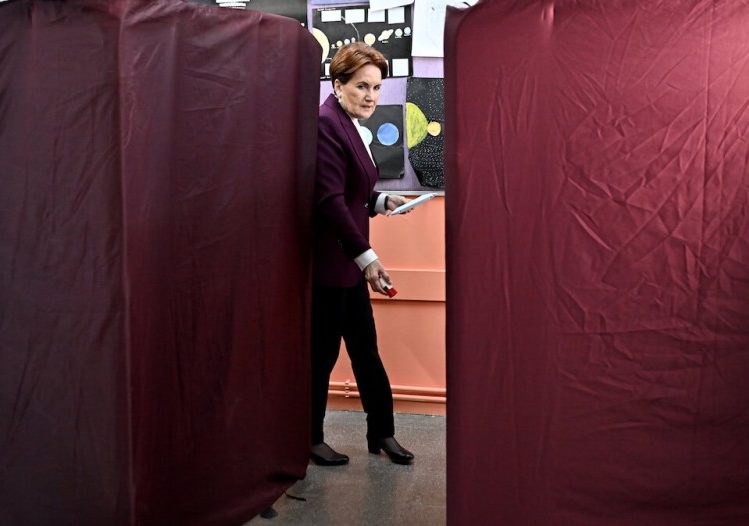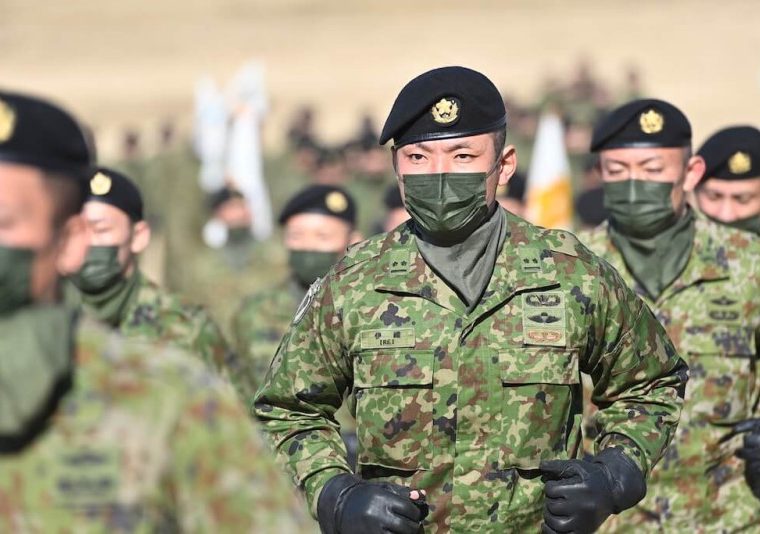F
ollowing the blame for the loss in the Second Karabakh War being put on Nikol Pashinyan, Armenia was plunged into internal political turmoil and a process of self-examination. Although Pashinyan was re-elected after the Karabakh defeat, on June 20, 2021, the opposition and ultra-nationalist social groups could not handle the defeat in the war. Since then, Armenian politics have been divided and polarized between rapprochement with Western countries and reliance on Russia to resolve the Karabakh issue.
Having failed to implement the provisions of the Moscow armistice of November 9, 2020, which ended the Second Karabakh War, Armenians have been reluctant to open the Zangezur corridor. The failure in the implementation of the ceasefire agreement, which stipulated that the Zangezur and Lachin corridors would remain mutually open, put the Azerbaijani side on hold, but the hope of achieving a peace agreement through diplomacy was kept alive.
The Karabakh Armenians, who considered themselves a de facto state in Karabakh and were unable to reconcile with the results of the Second Karabakh War, escalated tensions with the Azerbaijani army in 2022 as if they were a separate state from Armenia and, encouraged by the presence of the Russian Peacekeeping Force in the region, were under the illusion that Azerbaijan could not intervene in Karabakh.
At the same time, the election of Samvel Shahramanyan as president by the representatives of Karabakh Armenians under the name of the so-called Nagorno-Karabakh Republic undermined the spirit of the desired peace agreement.
Azerbaijan suspended aid through the Lachin corridor on the grounds that it was used to carry military equipment, while humanitarian aid through Aghdam would be permitted. In addition, Azerbaijan started to provide relief supplies to Karabakh Armenians, who threatened to burn the aid convoys.
As Karabakh Armenians armed themselves and increased their mine-laying activities, Azerbaijan launched an “anti-terrorist operation” on September 19, 2023. The identified targets were destroyed with precision ammunition. At the same time, Azerbaijan organized point operations in the direction of Karabakh with its law enforcement forces to “restore constitutional order.”
The Russian Peacekeeping Force stated that no civilians were harmed in the operations. After the internal security operation carried out by Azerbaijan, Armenia and Karabakh Armenians did not receive the support they expected from Moscow. They decided to lay down their arms and met with Azerbaijani officials in Khankendi under the supervision of the Russian Peacekeeping Force.
Although no clear decision was reached during the meeting, Karabakh Armenians accepted Azerbaijan’s demands in practice; some soldiers, however, opposed the surrender and retreated to forested areas. Many Karabakh Armenians sought to migrate to Armenia.
In Armenia, the Armenian opposition started demonstrations in Yerevan over allegations that Pashinyan did not provide enough support to Karabakh Armenians. Eight soldiers and former Yerevan mayor Albert Bazeyan were arrested following intelligence reports on a coup attempt by senior Armenian soldiers. Armenian politics was again thrown into turmoil, and the fragile nature of the balance in the Caucasus began to reappear as Armenians who were displaced to Karabakh after 1992 began to return to Armenia.
With the events in Armenia and the acceptance of Azerbaijan’s demands by the Armenians in Nagorno-Karabakh, a new chapter has opened in the Caucasus. Following the collapse of the Soviet Union, the conflict between Azerbaijan and Armenia has now entered the final stretch, and the meeting between the leaders of the two countries in Spain, expected to take place on October 5, 2023, offers hope for a final peace agreement.
Do the Armenians have a strategy?
The Armenian strategy from 1992 to 2020 was to rely on the Collective Security Organization, i.e., Russian security guarantees, and to take advantage of the West’s silence in favor of the Armenians. However, Armenian politicians failed to interpret the changing global and regional balances. Putting aside the practice that a state can engage in an armed conflict on behalf of another state – only if its interests require it – Armenia assumed that the “forced” status in Karabakh was permanent.
With Armenian politics caught between Westernism and Russianism, the country has been unable to choose between the politics of threats and reconciliation. As a matter of fact, Pashinyan was able to say “Karabakh is Azerbaijan’s territory” while threatening Azerbaijan on social media. The reason for such ups and downs is Armenia’s economic, political, and military incapacity is the reason for such ups and downs.
Having no access to the sea and being landlocked between four neighboring countries, Armenia has transformed its economic vulnerability into military incapacity with political division. For this reason, the Yerevan administration has delegated the Karabakh strategy to other countries and has no long-term strategy or action plan.
Armenia’s strategic mistakes, especially regarding Russia’s attitude, is worth mentioning at this point. In this context, the military exercise with the United States determined Russia’s attitude towards the Pashinyan administration and pushed Moscow to be more neutral towards Karabakh.
Meanwhile, Armenia’s membership in the International Criminal Court made Moscow uneasy with the ICC being criticized by the Russians for the arrest warrant issued against Russian President Vladimir Putin. Pashinyan’s declaration that the Russian presence in the region has been weakened after the outbreak of the war in Ukraine and sending his wife, Anna Hakobyan, to Ukraine to provide humanitarian aid made Pashinyan’s Westernist and “unreliable” side explicit in Moscow’s eyes.
How should Azerbaijan’s current actions in Karabakh be interpreted?
Since 1992, Azerbaijan, with the motto “Karabakh is Azerbaijan!”, has been determined to connect Karabakh to its homeland, first through diplomacy and then through military means. In this respect, Azerbaijan has successfully implemented its diplomatic maneuvers and maximized its military readiness under the favorable conditions of political stability and the economic gains of the energy sector. Carrying out a long-term defense program, Azerbaijan did not delay its responses during periods of heightened tensions.
While Azerbaijan fulfilled the requirements of the document signed after the November 9 ceasefire, it expected the same from Armenia. In this framework, the mutual functionalization of the Lachin and Zangezur corridors was regarded as a clear parameter. On the other hand, no concessions were made towards Karabakh’s goal of becoming an independent state through political actions, and a policy was put forth towards the integration of Karabakh Armenians into Azerbaijan.
An active Azerbaijani strategy was put into practice in the face of the so-called Karabakh presidential election, which Karabakh Armenians wanted to dictate as a fait accompli. The main principle of the strategy is based on the concept of a “unitary Azerbaijan.” In this respect, the separatist actions of the Armenians were not tolerated.
Recent developments indicate that Azerbaijan is initiating a normalization process in Karabakh. Steps have also been taken to integrate Karabakh into Azerbaijan’s infrastructure and administrative system. In this context, electricity from Armenia was cut off and connection to the Azerbaijani grid was established.
Within the scope of normalization, Azerbaijan intends to ensure full control of Karabakh’s administrative, civil, and security organization in the coming days. However, the Baku administration’s ultimate goal in all these developments seems to be to sign a permanent peace agreement.
Recommended
What are the threats to Azerbaijan’s Karabakh normalization process?
Low-profile attacks by Karabakh Armenians in Karabakh and along the Armenian border are still the most likely scenario. In this context, Karabakh Armenians should be expected to start terrorist acts through terrorist organizations. Such a scenario, which Armenians, who lack military capacity, can deny and blame on Karabakh Armenians, has advantages for Russia and Iran.
With the November 9 ceasefire, Russia gained the privilege of having troops in the heart of the Caucasus. Such a strategy, which could be built on intimidation and separatism, could contribute to Russia’s permanence. Iran, on the other hand, favors Armenia as it sees a strong Azerbaijan as a threat to its territorial integrity.
As for the U.S., a half-hearted acceptance of Azerbaijan’s Karabakh strategy may be seen. Since the start of the Russia-Ukraine war, the U.S. has attached importance to Armenia for two reasons: The first is to detach Armenia from Russia and integrate the Caucasus, an energy storehouse, into its system. The second is to please the Armenian diaspora. These factors may cause a challenge to the Karabakh normalization process.





